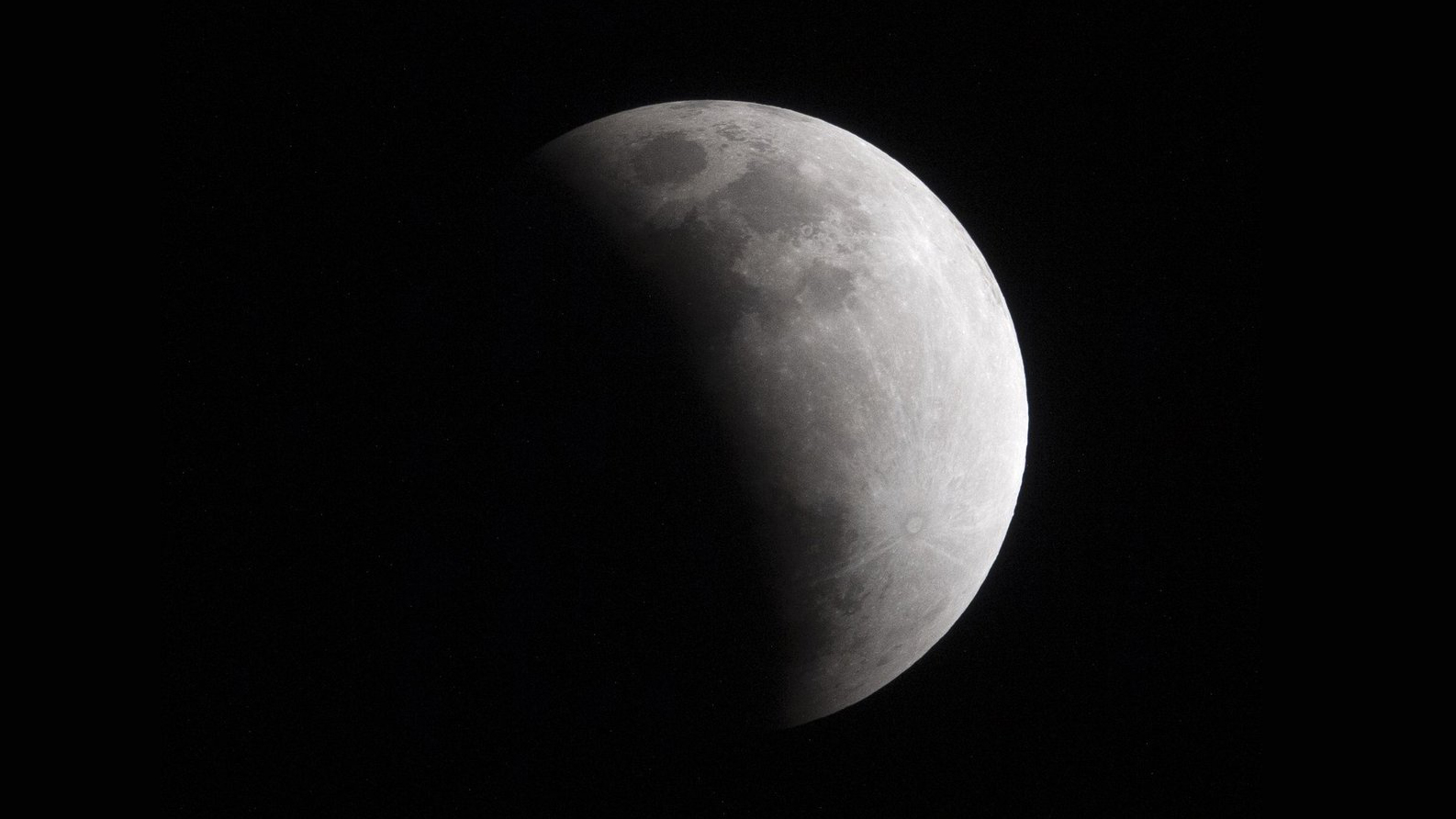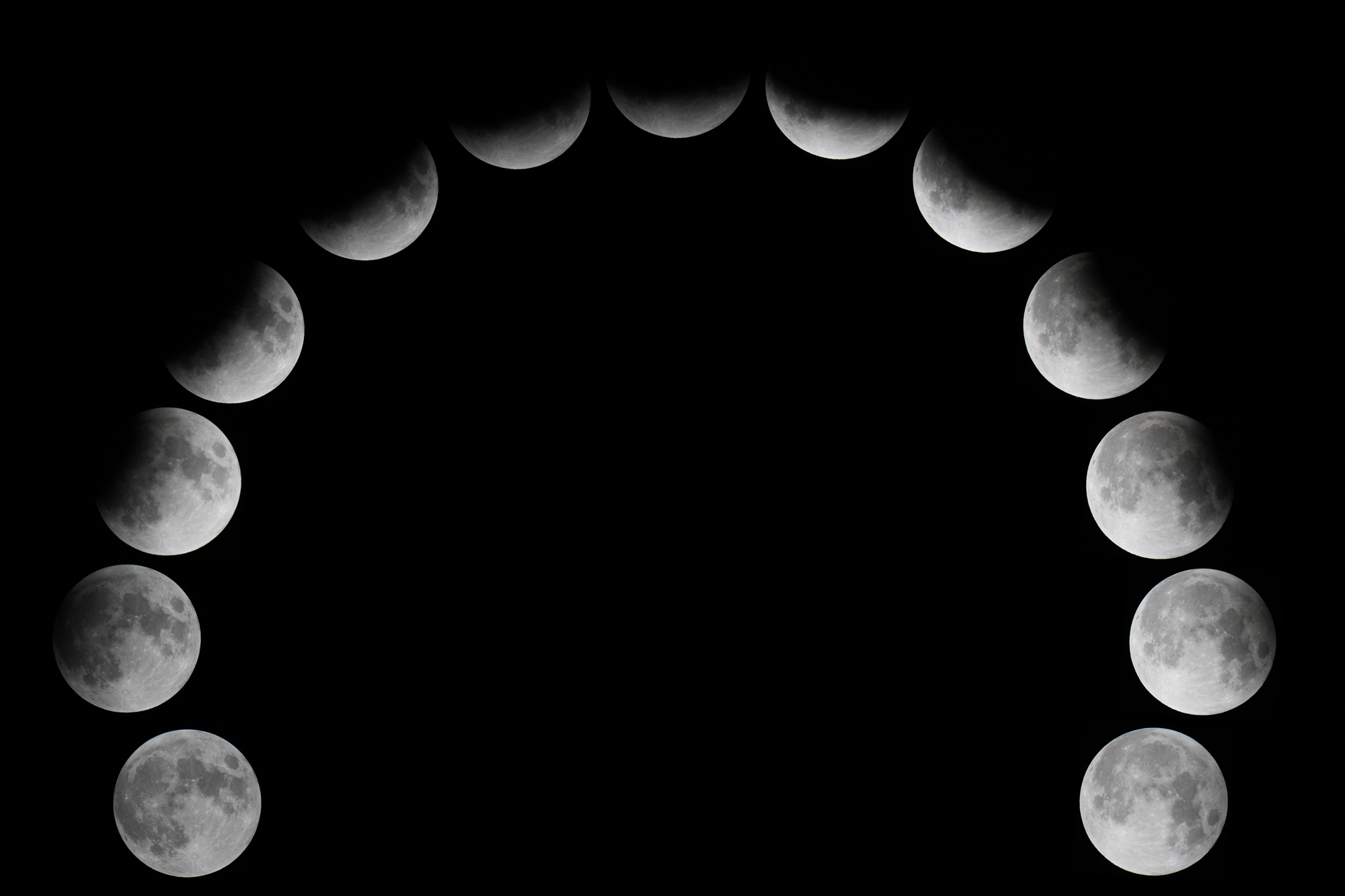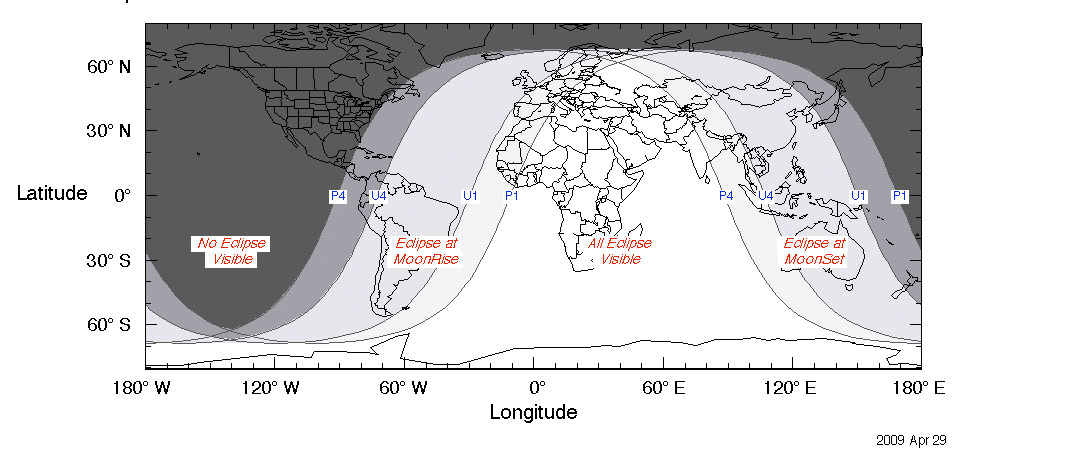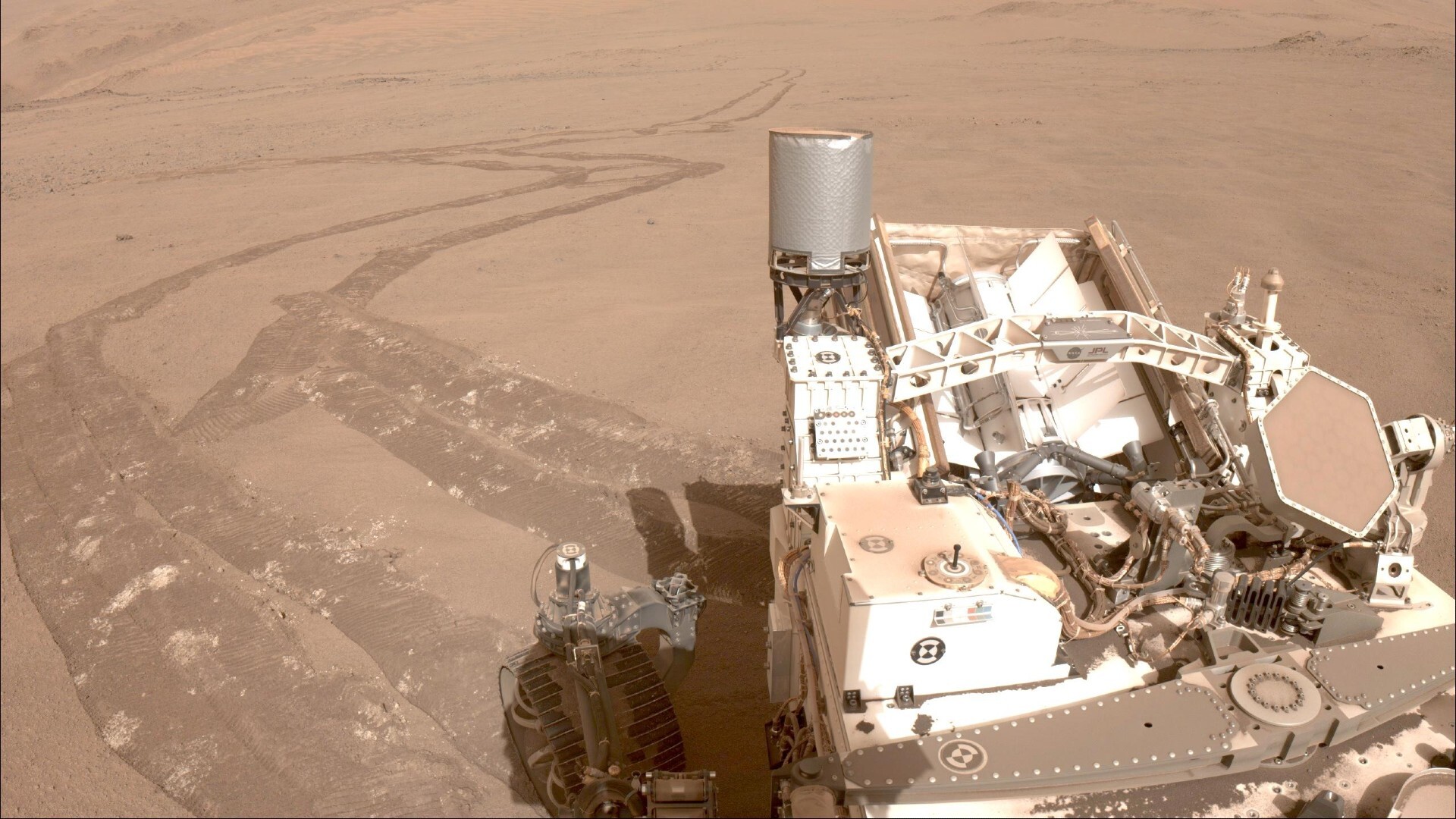Partial Lunar Eclipse Puts on a Moon Show 50 Years After Apollo 11 Launch
Viewers on Earth and in space caught a partial lunar eclipse overnight on July 16-17.

BOGOTA, Colombia — The moon was at the tail end of a partial lunar eclipse when it rose above the Andean horizon here on Tuesday (July 16), its northern limb taking on a slightly tinted color that the city skyline largely obscured. The full ''Thunder Moon'' then ascended high into the sky, veiled in the cloud coverage that settled across the Bogota savanna, which sits 8,660 feet (2,640 meters) above sea level.
In other parts of South America and in much of the rest of the world, millions of spectators caught a fabulous celestial show as the moon underwent a partial lunar eclipse. The event could be seen on this continent and throughout Africa, the Atlantic Ocean, Europe, Asia and Australia, but North America and parts of eastern Russia were left in the dark, so to speak, because the moon was under their horizon during this color change.
This lunar eclipse, which is the last one of 2019, came exactly two weeks after the shadow of a total solar eclipse crossed the cone of South America, from Chile to Argentina, on July 2. It also arrived on a historic day: the 50th anniversary of Apollo 11's launch toward the moon.
Related: How Lunar Eclipses Work (Infographic)
From Bogota and most regions in Colombia, the full moon could be seen taking on a tinted brownish color, as if somehow the moon had been dipped into a pot of tea. This subtle coloration marks the book ends of the eclipse, when the moon slides into the outer part of Earth's shadow. Month to month, the full moon is usually illuminated by sunlight in its iconic glow, but periodically, its path brings it into the outer (penumbral) or inner (umbral) shadow that Earth casts into space.
For skywatchers in Bogota, the most dramatic part of the eclipse had already happened by the time the moon rose in the east. While Colombians could see only the final penumbral phase of the eclipse, those farther east could see up to 65% of the moon's face engulfed in Earth's dark shadow.
Part of the partial lunar eclipse was visible in other parts of South America, like La Paz, Bolivia, where the moon could be seen boasting a touch of red as it partly entered into the deepest part of Earth's shadow during its ascent in the sky. The rusty hue then disappeared from the lunar surface slightly before 7 p.m. local time, when the partial phase of the eclipse subsided into the final penumbral phase, according to timeanddate.com.
Breaking space news, the latest updates on rocket launches, skywatching events and more!
.@BreakfastNews cameraman Simon Winter snapped this great shot of the partial lunar eclipse in Tamworth, NSW. pic.twitter.com/47I7XkJbo7July 16, 2019
Across the Atlantic Ocean, metropolises like Cairo, Rome, Istanbul and Cape Town, South Africa, had center-stage viewing of the full event and caught over 5 hours of the celestial sighting. For comparison, La Paz and Brisbane, Australia, caught about 2 hours; the moon was rising in La Paz as it exited Earth's shadow, and the moon was setting in Brisbane while it was still passing through the umbral shadow a couple minutes after the eclipse peaked there. The partial lunar eclipse could also been seen from major cities in Europe, like London and Paris.
The partial lunar eclipse from the roof of the BBC and through our cameraman’s viewfinder #LunarEclipse2019 pic.twitter.com/6RIh5hzmvJJuly 16, 2019
Let's zoom in on that moon #LunarEclipse pic.twitter.com/8yOwCyu4ETJuly 16, 2019
An unexpected treat during our vacation in France: A partial lunar eclipse. pic.twitter.com/o3UzXZFFJQJuly 16, 2019
NASA astronaut Christina Koch was aboard the International Space Station when she caught the partial lunar eclipse.
''So special to experience a partial lunar eclipse during the historic week of #Apollo50th celebrations," Koch tweeted July 16 along with a photo of the moon that she captured from orbit. ''Dreaming of the sights we'll see on future #Artemis missions,'' Koch added, referring to the NASA program aiming to return humans to the surface of the moon by 2024.
The odds were in our favor on @Space_Station today🌒 So special to experience a partial lunar eclipse during the historic week of #Apollo50th celebrations. Dreaming of the sights we’ll see on future #Artemis missions. pic.twitter.com/uYP1sq6XC9July 17, 2019
Others, like photographer Andrew Brooks, made the special connection between the eclipse and the celebrations of this historic week.
''Good to see the moon looking so beautiful on the anniversary of the #MoonLanding,'' Brooks shared on Twitter along with a photo of the eclipse that he took from Manchester, England.
This evenings #LunarEclipse seen from central #Manchester. Through clouds, trees & the city light.Good to see the moon looking so beautiful on the anniversary of the #MoonLanding#MoonLanding50 #Apollo50 #moon pic.twitter.com/XphRp1DHhKJuly 16, 2019
If you missed this lunar eclipse, you'll have to wait until Jan. 10, 2020, for a chance to see the next one. That eclipse will be only a penumbral eclipse, which means that the moon won't get as dark as it passes through the outermost part of Earth's shadow. There will be a total of four penumbral lunar eclipses in 2020, but there won't be another partial or total lunar eclipse until 2021. For more info about upcoming eclipses, check out our complete list of lunar and solar eclipses from now until 2024.
- Best Photos of the 2019 Total Solar Eclipse
- Pow! A Meteorite Slammed into the Moon at 38,000 MPH During Lunar Eclipse
- Venus and Jupiter Shine Over a Dreamy Lunar Eclipse (Photo)
Follow Doris Elin Salazar on Twitter @salazar_elin. Follow us on Twitter @Spacedotcom and on Facebook.

Doris is a science journalist and Space.com contributor. She received a B.A. in Sociology and Communications at Fordham University in New York City. Her first work was published in collaboration with London Mining Network, where her love of science writing was born. Her passion for astronomy started as a kid when she helped her sister build a model solar system in the Bronx. She got her first shot at astronomy writing as a Space.com editorial intern and continues to write about all things cosmic for the website. Doris has also written about microscopic plant life for Scientific American’s website and about whale calls for their print magazine. She has also written about ancient humans for Inverse, with stories ranging from how to recreate Pompeii’s cuisine to how to map the Polynesian expansion through genomics. She currently shares her home with two rabbits. Follow her on twitter at @salazar_elin.


